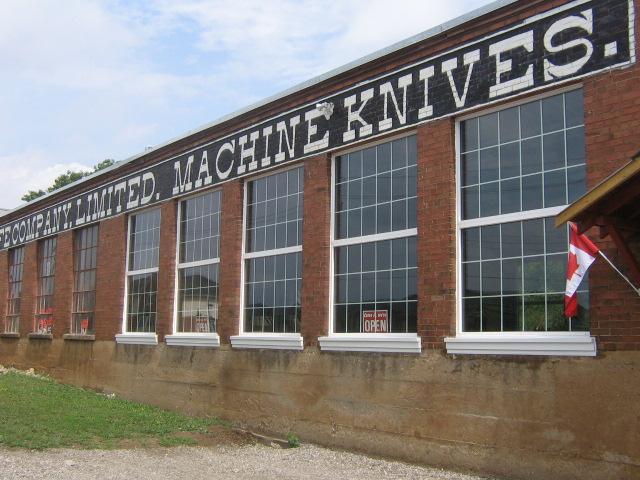 Well, there’s nothing like the fall of a murderous dictator to make the season bright. Sadly, no Nicky Ceaușescu moment but, still, it’s all good news. For now. Almost as cheery was this ad for Younger’s shared at the FB page of the Brewery History Society, It isn’t dated but I am thinking it’s 1920s if we are going by the plus fours of the gent leaning at the bar. They might even be plus eights!
Well, there’s nothing like the fall of a murderous dictator to make the season bright. Sadly, no Nicky Ceaușescu moment but, still, it’s all good news. For now. Almost as cheery was this ad for Younger’s shared at the FB page of the Brewery History Society, It isn’t dated but I am thinking it’s 1920s if we are going by the plus fours of the gent leaning at the bar. They might even be plus eights!
Speaking of the happy jollies, Kate has posted some holiday gifting suggestions over at her site The Gulp with a note of sympathy for anyone needing the advice:
It sounds like an impossible job, buying presents for ungrateful bastard beer people, and honestly, it’d be understandable if you didn’t bother. However, if you’re still dead-set on making your favourite beer lover happy, here are some bolt-from-the-blue ideas you’ve still got time to work on before Christmas comes.
I like the reasonably budget conscious Guinness toque idea. Speaking of getting in the holiday mood, Lars has a tale of ales of yore in Craft Beer & Brewing that starts with a timely reminder for you and you and especially you:
One Christmas Eve in the late 19th century, the family on the Hovland farm in Hardanger, Norway, was sitting down for a festive dinner. The food was on the table, the candles were lit, and the big wooden mug was full of beer. Then, suddenly, enormous hands appeared between the logs from which their house was built, tilting one side of the house into the air. In the gap between the logs, they could see giant eyes staring at them, glittering in the candlelight. The farmer didn’t panic. He immediately knew what the problem was. He grabbed the mug of beer from the table and ran out the door to the burial mound, just beyond the farmyard, and he poured the beer on the roots of the tree growing on top.
Feed the frikkin’ tree, wouldja?
Note #1: I could write this every week as opposed to every third week but Martin has another wonderful photo essay of a corner of Britain. This week he adds another twist as he’s in Rye daydreaming in a wonderful pub without really explaining how he is daydreaming in a wonderful pub:
And as you’ll know, has one of the UK’s top pubs on its doorstep. But even more than that, it has working WiFi.
Speaking of pub life, two more good discussions of the effect the cancellation of a number of British cask brands by megabrewers and ultimate licence holders Carlsberg UK and Marston’s PLC will have. First, Phil Mellows in British Beer Breaks shares how one of the beers being cut is a vital part of pub life at The Royal Oak, Chapel Ash:
“It’s tradition. It’s like waking up and seeing the time on a clock. Walking into the pub and not seeing Banks’s Mild in the bar will be very weird. It has been the milk of Wolverhampton for decades and so many people are upset about it going. I am a very proud Wulfrunian and Banks’s Mild has been here all my life. It feels like CMBC has ripped out our hearts.”
And David Jesudason found a similar loss at The Pelton Arms, Greenwich where Bombardier set the tone:
I served the bitter at the first pub I worked in – three cask pumps, always Pride, always Bombardier, the other rotated – and it wasn’t seen as fashionable even then in the late 90s. Which is perhaps to do with its branding – St George’s Cross etc – but the drink is actually quite subtle with a soft finish with hints of toffee, fudge and fruity tones of raisin and sultana. And this is the pint the locals go for here. Or went for, because of a decision made in a far off office they’re having it taken away just at a time when a pub needs to keep its drinkers – its regulars – who may think it’s not worth it after all and not make the trip to the pub.
I’ve seen a bit of a blip in the craft beer code recently, like this from Doug Velky:
Craft beer is currently in a cycle where nostalgia is playing the role that innovation was driving for so long. The pendulum will eventually swing back the other way, but it’s a great time to revisit and remind fans of their favorites that got us here. Despite the added stress we’re all under, here is still an awesome place, so let’s not forget that.
Nostalgia. That’s this week’s word. For what? What was he talking about? Black IPA. Yup, the only beer trend so disappointing it made us forget that the candle wax goodness of White IPA was even worse. Thankfully, it isn’t coming back. We just live in time times when manufactured positivity needs to grasp at straws. See also.
Speaking of what is in the bottle as opposed to what is pasted on the outsides… did I?… was I?… one scribbler I follow but don’t often mention is Mikey Seay of The Perfect Pour. This week he shared his thoughts about the process of bying Kirkland beer, Costco’s house brand:
We have been talking regularly on the Perfect Pour about Costco’s store brand beer Kirkland. Joking about it mostly, but it’s also making me want to try it. Especially since I am told that the fine Oregon brewer, Deschutes, makes it I am not a member of Costco, and it’s a member-only kind of place. But there is an alcohol loophole. Costco can’t put alcohol exclusively behind the membership-only wall. So I/you as a non-member can go in and buy some Kirkland beer and whatever else ones they have.
I don’t think that applies in Canada… yet… but it terms of quality it reminds me of the Bon Appetit episode on the Kirkland range of wines. And by range I do mean range.
Looking over at perhaps the other side of the season too often not acknowledged, Ray posted some thoughts about loss at B+B this week which were both personally heartfelt but also an exploration of what many go through as we demand happiness and joy this time of year:
I’d always got the impression Dad didn’t like the pub much but Mum told me that wasn’t the case at all. In fact, after their first visit, he said he was worried that, in retirement, it might be a bit too easy to end up there every lunchtime spending money they didn’t have on booze that wouldn’t do them any good. So he avoided it altogether. Mum and I had been there a while, one round in, before we noticed that both of us were bopping along to the jukebox. It was non-stop blues music – not exactly the kind of songs Dad would have chosen himself, but not far off. We shivered. It felt spooky.
Far less seriously, in Australia where it is summer a beer snake interrupted an international cricket match:
The beer-snake-wielding cricket fan who ran through a roped-off area of the Adelaide Oval on Friday night has revealed what was going through his head when he interrupted play in the second Test. Lachie Burtt, now better known as “beer snake man”, hoisted his pile of beer cups above the sight screen just as India’s Mohammed Siraj was about to bowl to Marnus Labuschagne late on day one. “In my head at that time, I just wanted to get away from the guard, so I saw the space and hopped over the tiny white rope,” he told 9News.
The Times of India was less amused. And also not fully amused, Stan had a great round up this week – many new thoughts on the state of things here and there – including this on some of the questionable writing we have to put up with:
If you somehow didn’t see one of the gazillion stories about the role social media stars played in the recent election, one of them was Joe Rogan. Before I grew weary of reading the same story over and over, and wondered to myself who the Joe Rogan of beer might be.
Spill! The comments are open.
Speaking of something even more dubious, the story of Carlsberg’s somewhat reluctant exit from its Baltika brand and the Russian beer market appears to be coming to its conclusion:
The management buy-out, announced today (3 December), sees a company established by two Baltika employees become controlling shareholder of the subsidiary, which reportedly has eight breweries in Russia, including one in St. Petersburg, and produces more than 50 brands… According to documents seen by Reuters, the deal, which has been approved by both the Russian and Danish states, is worth a reported 30.4 billion rubles (£226.4 million at the time of writing)… A press release from Carlsberg Group also revealed that, as part of the deal, Baltika Breweries will transfer all of its shareholdings in Carlsberg Azerbaijan and Carlsberg Kazakhstan to the Carlsberg Group.
“At the time of writing” is doing a lot of heavy lifting in that passage, although the load is lightening by the hour.
Note #2: samples are not gifts.
In Pellicle, Claire Bullen takes us along to Mikulov, Moravia in the Czech Republic where we meet Jitka Ilčíková, the founder of Wild Creatures brewery:
The brewery now occupies an expansive industrial unit just north of Mikulov, in the village of Dolní Dunajovice. The space itself is nondescript and utilitarian, all concrete surfaces that echo with the zap of electric fly killers. Outside, its riches are more apparent. The land here is almost laughably lush, with its orchards and vineyards and fields of nodding sunflowers. At one point, we pass a plum tree whose fruits are still green and hard. But when they are ripe, Jitka says, they taste like honey… Wild Creatures today owns several vineyards, which contain multiple varieties of wine grapes, as well as two apricot orchards and part of a sour cherry orchard. The rest of the fruit comes from friends or partner suppliers.
Last week, we discussed (you and I… we did!) Christmas office parties and how they were dying off. This week we read in The Times of how some are fighting for being included in the inviting:
The Public and Commercial Services Union, the largest civil service union, told its members that if they were not invited to festive dos — and they suspected it may be because of their age, gender, religion or ethnicity — they could have an employment tribunal claim. The union told civil servants that sexual harassment and inappropriate behaviour are “just as unacceptable at social events as they are in the workplace”… They also warned: “Excluding someone from a work social event due to a protected characteristic such as gender, age, religion, or ethnicity, could also constitute discrimination.”
It is an excellent point. Which is another good reason to not have this sort of horrible event and do something else instead. And finally, also following up on the final news item of last week and proving one again that if you have to explain that something was a joke then it wasn’t a joke or at least it wasn’t a good joke, we have this retort care of one K M Flett:
The beer writer Pete Brown had a lengthy Q&A about all matters beer in the Sunday Times magazine on 1st December. It was of course well informed and entertaining. He posed, to give one example, the question ‘does anyone drink mild anymore’ to which he answered simply ‘no’. I’m not sure whether this was a joke (fair enough) or a personal view but either way it is of course not true. Mild has long been characterised as an old man’s drink, and I am an old man (well 68 anyway) so I would say that. Except I’ve been drinking mild for decades even when I was younger, so much younger than today etc.
Zing Not Zing? Oh well. Still, an opportunity to use the rather dusty “Mild” category tag. PS: Matty C also drinks mild.
Note #3: can an introduction really also be a masterclass?
Whew. That is it! Counting down the days rather than the weeks from here on out. Work will be busy up to the bell for me but hopefully you will start seeing things lighten up soon. Until next Thursday, please check out Boak and Bailey every Saturday and Stan going strong again each and every Monday. Then listen to Lew’s podcast and get your emailed issue of Episodes of my Pub Life by David Jesudason on the (never ever) odd Fridays. And Phil Mellows is at the BritishBeerBreaks. Once a month, Will Hawkes issues his London Beer City newsletter and do sign up for Katie’s wonderful newsletter, The Gulp, too. The Share looks to be back with a revival. Ben’s Beer and Badword is out there with the all the sweary Mary! And check out the Atlantic Canada Beer Blog‘s weekly roundup. There is new reading at The Glass which is going back to being a blog. Any more? Check out the Beer Ladies Podcast. That’s quite good and they are revving up for a new year. And the BOAS podcast for the bro-ly. And the long standing Beervana podcast …except they have now stood down. Plus We Are Beer People. The Boys Are From Märzen podcast appears suspended as does BeerEdge, too. But not Ontario’s own A Quick Beer. There is more from the DaftAboutCraft podcast, too. All About Beer has podcasts and there’s also The Perfect Pour. Plus follow the venerable Full Pint podcast. And the Craft Beer Channel on Youtube. The Moon Under Water is gone which is not surprising as the ask was $10 a month. Pete Brown’s one cost a fifth of that but only had the one post. Such is life.


















